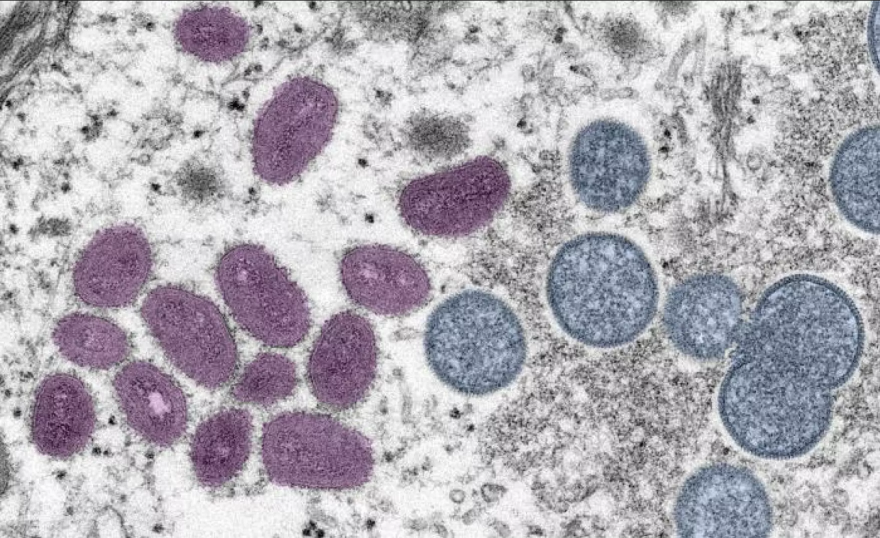The first case of Monkeypox in Montana was confirmed in a Flathead County resident in early August, followed by another in Gallatin County. State health officials say they have received vaccines and are working with local public health departments to track the virus.
Interview highlights
- Monkeypox cases have been confirmed in Flathead and Gallatin counties
- Health officials are working to identify close contacts of infected people
- The virus mainly spreads through close, intimate contact, and less commonly through contact with things like clothing, bedding or towels that have been used by an infected person
- A majority of cases have been found in men who have sex with other men, but the virus can affect anyone
- Vaccines are in short supply and limited to people with a high-risk of contracting the virus
Montana Public Radio’s Corin Cates-Carney spoke with Freddy Monares who has been reporting on this issue.
Corin Cates-Carney: What do we know about the virus’ spread in Montana?
Freddy Monares: It’s still really early and there’s not many details. But public health officials are identifying close contacts of people who have tested positive for the virus. I spoke with Dr. Neil Ku, a Billings Clinic epidemiologist, before the first case was reported in Montana. He said if there’s one person in an area whose tested positive, there’s a good chance there are more.
“There are going to be others and there are going to be a lot more exposure. So we should, and we need to be prepared."
Common transmission of the virus has been through close, intimate contact with a person who has monkeypox. The World Health Organization says the vast majority of cases involved sexual contact. And although it’s rare, it can spread by spending a lot of time face-to-face with an infected person, and by touching things like clothing, bedding or towels that have been used by an infected person.
What kind of symptoms should people be on the lookout for?
People may see a rash, bumps, or blisters on a their face, arms and legs and chest, as well as inside mouths, on genitals and in the anal regions. Some people may also have flu-like symptoms.
Symptoms usually start within a few weeks of exposure to the virus and illness lasts 2-4 weeks.
There are only a couple cases so far in Montana, what are public health officials saying about preventing further spread?
So, Dr. Neil Ku says this is really tricky because the CDC’s guidance is to avoid people who are infected with monkeypox, but that can be hard to identify.
“Or, you take it upon yourself to only trust those you know very well.”
Ku says messaging to the LGBTQ community is important because a majority of cases have been found in men who have sex with other men. He says reducing the number of sexual partners, practicing monogomy and using protection during sex, like a condom, can help.
“I think that recognizing, instead of stigmatizing the behavior, and see a work around, is what I’m trying to advocate on. You just got to be a little smarter about it — lower the number of sexual partners. You probably shouldn’t go around and have anonymous sex.”
Ku says this virus is spreading within the gay community, but it can affect anyone. He says clinicians need to keep an eye out for this virus in all patients or else they risk missing it.
"I’m trying to dispel that bias that we’re creating by saying, if you keep perpetuating that, then that’s the only population you’re going to look for. And you may ignore, clinicians could potentially miss a diagnosis because, 'they’re not gay, so why would they … I don’t think this is monkeypox.’ And that actually has happened.”
This virus can affect anyone. It's primarily spreading within the LGBTQ community. How is that community in Montana responding?
I spoke with Kevin Hamm, the president of Montana Pride, the organization that puts on the big pride parade in Helena every year. He says there are concerns within the LGBTQ community about the unknowns of the virus and how long it’ll take to get a vaccine.
“I keep asking health professionals across the state, and basically, unless you’re in very small, very specific groups, they’re not available yet.”
Hamm tells me he’ll be practicing precautions meant to prevent the spread of the virus.
“I understand the need for hugs. Don’t do it.”
You touched on how long it can take to get a vaccine. What do you know about access to the shots in Montana?
The state health department says it’s received 750 doses of vaccine for people who meet certain criteria. With limited supply, Montana is following guidance from the federal Centers for Disease Control and Prevention for who it recommends gets a vaccine. Right now that’s limited to people who have had exposure to someone with a confirmed infection and people with a high risk of coming into contact with the virus. People can learn more about who is eligible on the state health department website.
Copyright 2022 Montana Public Radio. To see more, visit Montana Public Radio.



